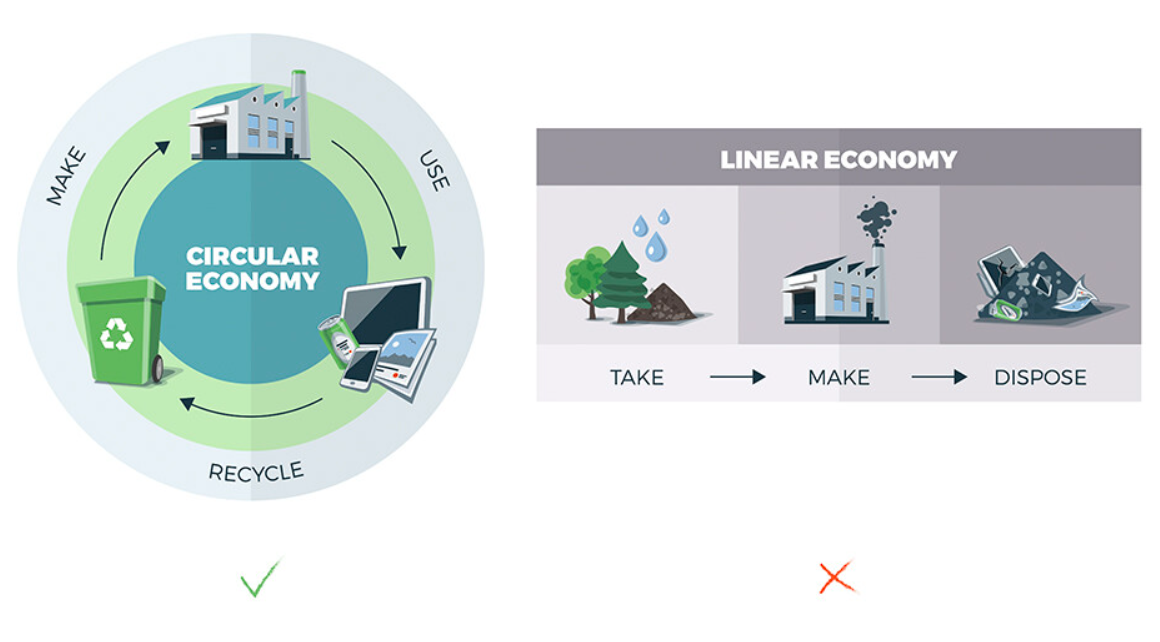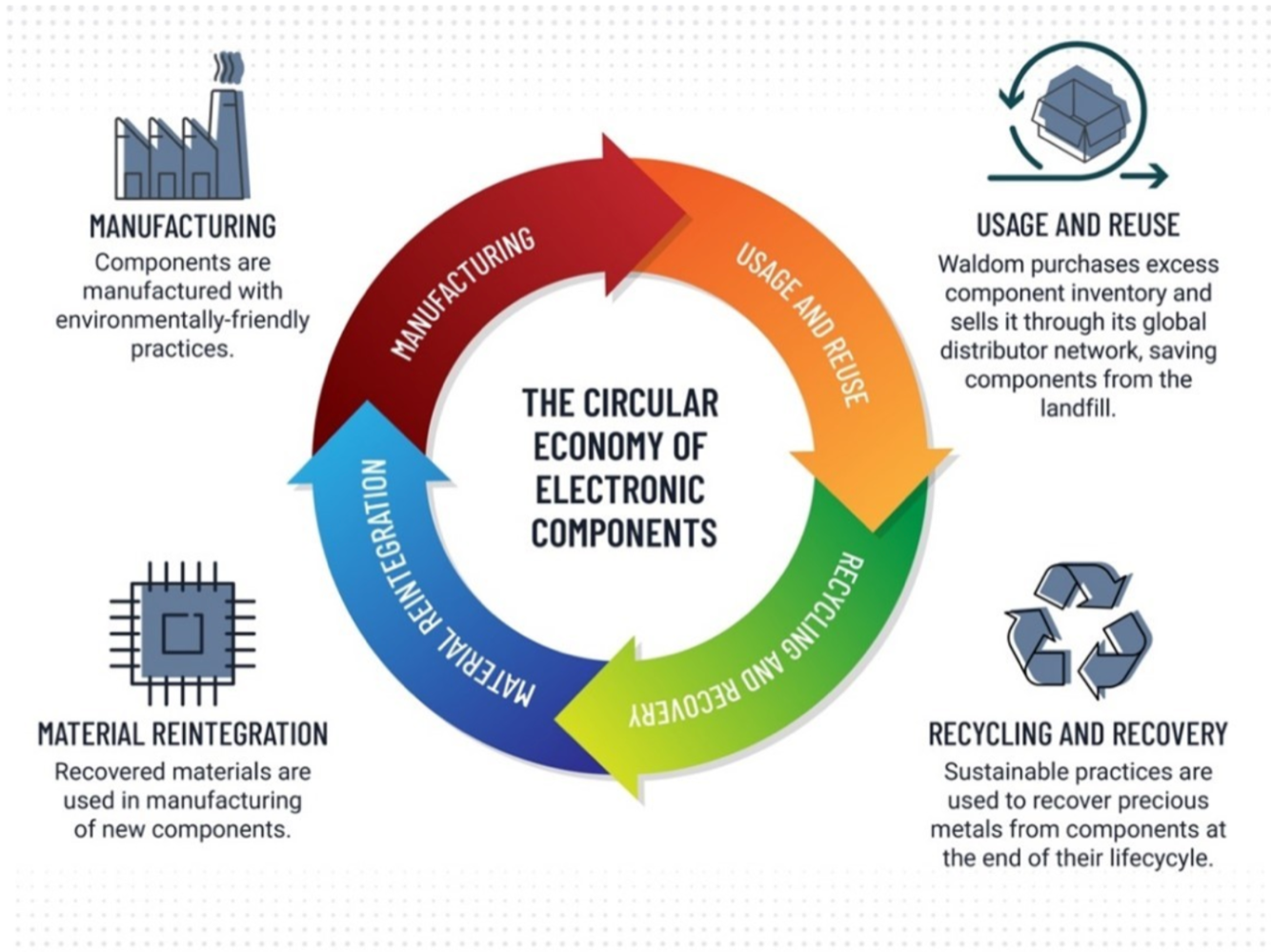How a Master Distributor Can Help Close the Circular Economy Loop
Buyer News | 08-08-2024 | By Waldom Electronics
Could usable metals be extracted from the 60 million tons of smartphones, hard drives, and other electronic waste produced every year globally? This advanced recycling challenge is one of the long-term objectives of circular economy implementation in the world of electronics.
With growing awareness of resource constraints and environmental challenges, the concept of the circular economy has emerged as a promising paradigm shift from the traditional linear "take-make-waste" industrial model. The circular economy envisions a system that is restorative and regenerative by design, aiming to minimise waste and maximise resource efficiency.
Understanding the Circular Economy
At its core, the circular economy is a framework that seeks to decouple economic growth from finite resource consumption. It advocates for a closed-loop system where materials and products are designed for longevity, reuse, and recycling, ultimately eliminating the concept of waste altogether. This contrasts sharply with the predominant linear economic model, which follows a one-way path from resource extraction to product disposal, leading to significant material and energy losses.

Moving Toward a New Model
Implementing a circular economy involves various strategies and principles. The first step is recovery, capturing waste from industrial processes or rerouting used and unused electronic components away from landfills. This turns wasted products back towards production, adding potential resources to the marketplace.
Once construction materials or excess products are collected, these recovered resources become business opportunities if matched with production processes that can put them to use. One major aspiration of the circular economy is to change product design to anticipate disassembly and material recovery at the end of product life. Resources could then be efficiently reclaimed and reintegrated into the production cycle.
Rare and hard-to-find minerals, like lithium, could then be accessed from old energy storage units and further refined into usable industry materials. According to some estimates, waste from decommissioned electric vehicle lithium-ion batteries alone could total 4 million tons annually by 2040 (source).

Recovery and Reuse
To move towards a more circular model, the electronics industry must embrace principles such as eco-design, which involves considering the entire lifecycle of a product from the outset, including its eventual disassembly and material recovery. Effective recycling systems and infrastructure must be developed to ensure that valuable materials are reclaimed and reintroduced into the production cycle.
While extracting the chemical composites of electronics may still be under technological development, there are many practices electronic parts makers and users can adopt today that can lessen environmental impact and align with circular principles. These more fundamental recovery activities can generate market opportunities and even new sources of revenue.
To close the loop on the linear model, companies can start by focusing on electronic component inventories. Over years, slow-moving and excess component stock accumulates due to overpurchased orders, discontinued products, or updating to newer versions. In the case of part vendors and distributors, perhaps a part is simply slow to sell and removed from catalogues. Traditionally, this excess inventory has been discarded or improperly recycled.
Instead of categorising excess electronic stock as waste to be scrapped, parts can instead find new uses via redistribution in the marketplace. Collaborative efforts between distributors, manufacturers, and master distributor Waldom are creating closed-loop systems. Learn more about Waldom’s Green Stock Program.
Adopting the Next Paradigm
The circular economy recognises the intrinsic value of natural capital and seeks to preserve and regenerate ecosystems through responsible resource management and the adoption of renewable energy sources. By minimising resource extraction and waste generation, the circular economy aims to reduce the environmental impact of human activities and promote long-term sustainability.
This paradigm shift towards a more sustainable and resource-efficient future involves closing material and energy loops in the electronics industry and promoting regenerative practices. While the transition to a circular economy presents many challenges, embracing its principles is essential for ensuring long-term sustainability in the electronics industry and on our planet.
Interested in learning more about how you can contribute to the circular economy? Contact us today to discover how our Green Stock Program can help you repurpose excess electronic components and reduce environmental impact.
For the original blog post, visit The Circular Economy: How a Master Distributor Can Help You Close the Loop.

